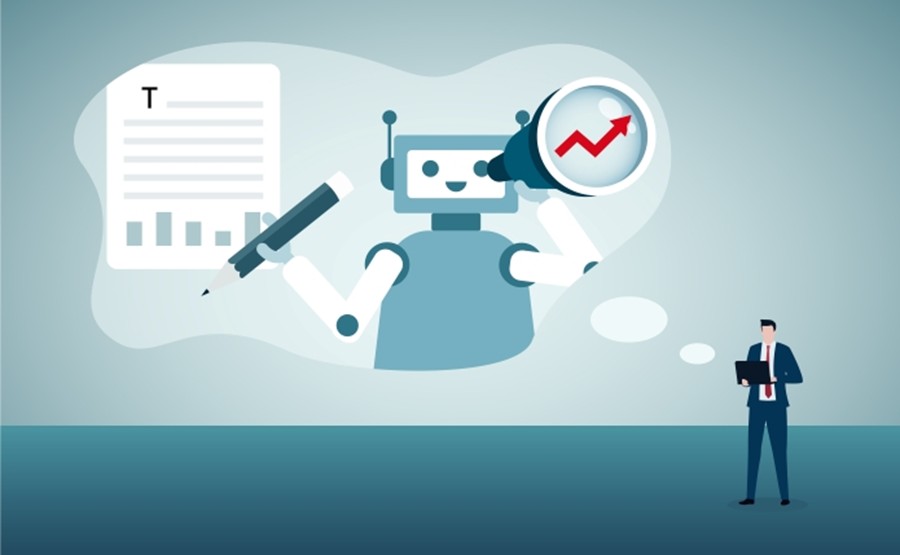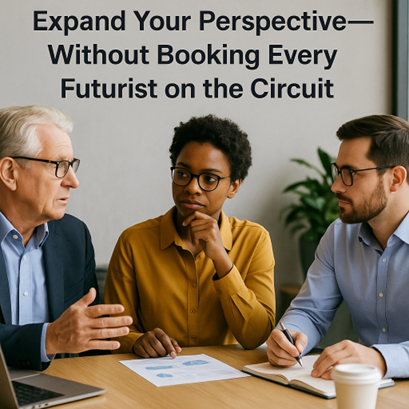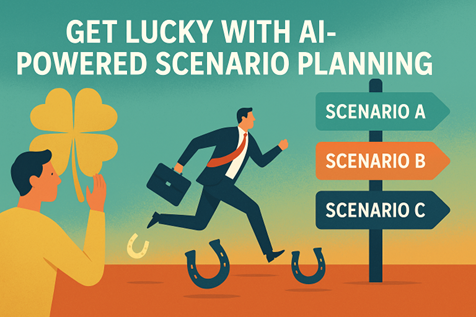How AI, Strategic Tools, and Human Insight Are Transforming Scenario Planning
If you’re in strategy, product planning, or market development, you know the challenge: how do you create a clear, confident plan when the future is anything but?
From tariffs and supply chain volatility to unexpected shifts in technology and customer behavior, uncertainty is the new normal. But here’s the good news: we now have more powerful ways to see around corners—by combining AI, strategic tools, and the insight of experienced, diverse thinkers.
This is the new model of scenario planning. Here’s how it works.
1. Expand Your Perspective—Without Booking Every Futurist on the Circuit
When companies start scenario planning, they often turn to internal experts or known economic indicators. That’s a start. But today, we can cast a much wider net.
AI allows us to bring in a curated view of the world’s best forecasters—from geopolitical strategists like George Friedman to macroeconomic thinkers like Ray Dalio—and extract their predictions, compare patterns, and test implications.
Bringing someone like Friedman in for a live session might cost $50,000–$100,000 and it would be worth it. But now, we can simulate that depth of thinking across multiple disciplines—at scale and at speed.
Clients can “invite” a diverse panel of voices into their strategy sessions virtually and use AI to compare, summarize, and shape that input into scenarios worth planning for.
This doesn’t replace human conversation. It enriches it—helping teams align on which futures are most worth planning against, and how to watch for signals that they’re coming true.
Simulating diverse expert input—without the keynote fee.
2. Use Structure to Cut Through the Chaos
With uncertainty all around, it’s tempting to react. But smart strategy doesn’t guess—it plans across scenarios.
We use a structured tool that starts by mapping potential disruptions on two axes:
– Impact (high to low)
– Probability (likely to unlikely)
Too often, companies focus only on what’s likely. But as we’ve seen in history, from pandemics to price shocks, it’s the low-probability, high-impact scenarios that can make or break a business.
Scenario planning gives those scenarios a space, not to build your main plan around them, but to prepare what you’d do if they happen. We call that strategic insurance. And we’ve seen it pay off.
3. Get Lucky—By Planning for the Unlikely
Years ago, our team saw that virtual training was going to become more relevant. Not because of a pandemic, just because the technology and cost curve suggested the shift was coming. So, we invested: tools, platforms, digital versions of our content.
Then COVID hit.
We hadn’t predicted a global pandemic. But our preparation for one scenario positioned us perfectly for a different one. Clients needed virtual training immediately. And we were ready.
That’s the power of scenario planning done right. You may not predict the disruption—but you’re prepared when it comes.
Final Thought: Build the Binder—Even If It Gathers Dust
Scenario planning isn’t just about reacting. It’s about reducing your vulnerability to being surprised.
Not every scenario will happen. And that’s the point. You’re not trying to predict the future, you’re trying to make sure that if it shifts, you’ve already thought it through.
That may sound like a binder on a shelf. But when something major happens—when that curveball hits—that binder may be your biggest advantage.

 Mary Abbazia
Mary Abbazia Tom Spitale
Tom Spitale Sean Welham
Sean Welham


